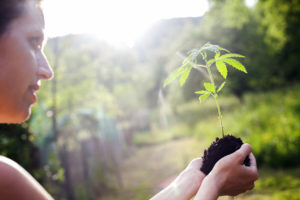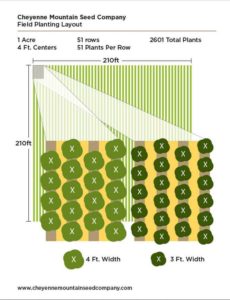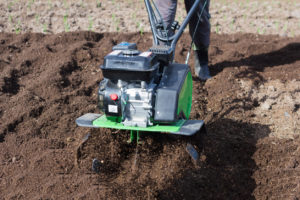
Spring is in the air, hemp growers!
Even those in the northern latitudes have started seeing the seasonal transition reveal itself. Small shoots pushing up from the ground, buds appearing on trees and shrubs – all indications that the earth is waking up and preparing to grow again. In my blog about Soil Basics, my focus was on the dirt itself – its composition and characteristics. Expanding a bit on that topic, this month’s blog is centered on best practices for preparing the soil for planting to ensure a successful crop.

Planning to till
Before you set foot in your field, planning out your hemp grow is critical. If you have previously planted hemp, now is the time to consider crop rotation to keep your soil healthy and avoid residual herbicide (if any) from last year’s grow. Our standard practice is to plant on four-foot centers with wide runways to allow room for mechanical weeding and feeding. Check out this Field Planting Layout on our website for a detailed explanation about how to create an efficient plan for your crop. Take special note of my comments in that article about direct sunlight!

Why till in the spring?
Soil preparation is critical to the success of your harvest. Although you likely tilled in the fall, I recommend a second tilling in the spring for several reasons. Spring tilling helps create a firm, uniform planting base for young, tender seedlings to easily settle in. It also will reduce appearance of early weeds. And finally, tilling helps aerate the soil which makes it easier for hemp to set its long tap roots. Weather is, of course, a consideration when you pick a time for tilling. Optimally, your soil temperature is close to 50o F and you’re past any danger of a hard freeze when you begin planting.

CBD hemp
If you’re growing hemp for CBD, you know that only the female hemp plants will yield the CBD cannabinoid. Additionally, unlike fiber hemp or seed hemp, CBD hemp plants need a lot more room to grow successfully. For example, CBD hemp growers generally put in 1000 to 1600 plants per acre versus up to 400,000 plants per acre for industrial hemp. This means that the quality of every single hemp plant in your field is vital to your successful harvest. It is financially much smarter to buy high-quality, feminized hemp seed from a reputable dealer; this is the best way to ensure that your plants are female, productive, and vigorous against your field and weather conditions. If you are still shopping for your 2022 hemp seeds, I invite you to have a look at our top-rated strains here.
Weeds and water
When it comes to weed control, now is the time to make some choices that will keep pesky species from invading your grow and stealing nutrients from your hemp plants. One option is growing a cover crop in the runways – such as teff grass – that will choke out other weeds and help add nutrients back to the soil for next year. Control the cover crop with occasional mowing. You can also use black landscape plastic to both control weeds and retain soil moisture. And speaking of moisture, pre-planting time is also the time to plan out and install your irrigation. There is a great article called Hemp Field Irrigation on our website that goes into detail about how to create a smart irrigation system for your grow.

Seeds vs. seedlings
Are you direct planting seeds into your field or planting seedlings you’ve grown indoors? The answer to that question likely depends on several factors, including how large a grow you are planning and how much room you have for an indoor grow. For those planting seedlings, a big question is whether to use hand labor or a mechanical transplanter. We have heard mixed results from growers about mechanical transplanters, but those who like them advocate for the time- and back-saving advantages. There are also mechanical seed planters that will inject seeds directly into the soil. Again, that’s a decision to weigh against hand planting and the resources you have available. Regardless of whether you are putting in seeds or seedlings and regardless of whether you are using hand labor or machines to do your planting, it is critically important that you ensure each seed/seedling is in full contact with soil pressed lightly around it.
In Conclusion
As we approach “go time” in this year’s growing season, take time now to ensure that you are giving your plants every possible advantage to grow successfully. Planning, tilling, selecting high quality seed, and planting with care will help make sure that you are one happy farmer come fall!


Recent Comments